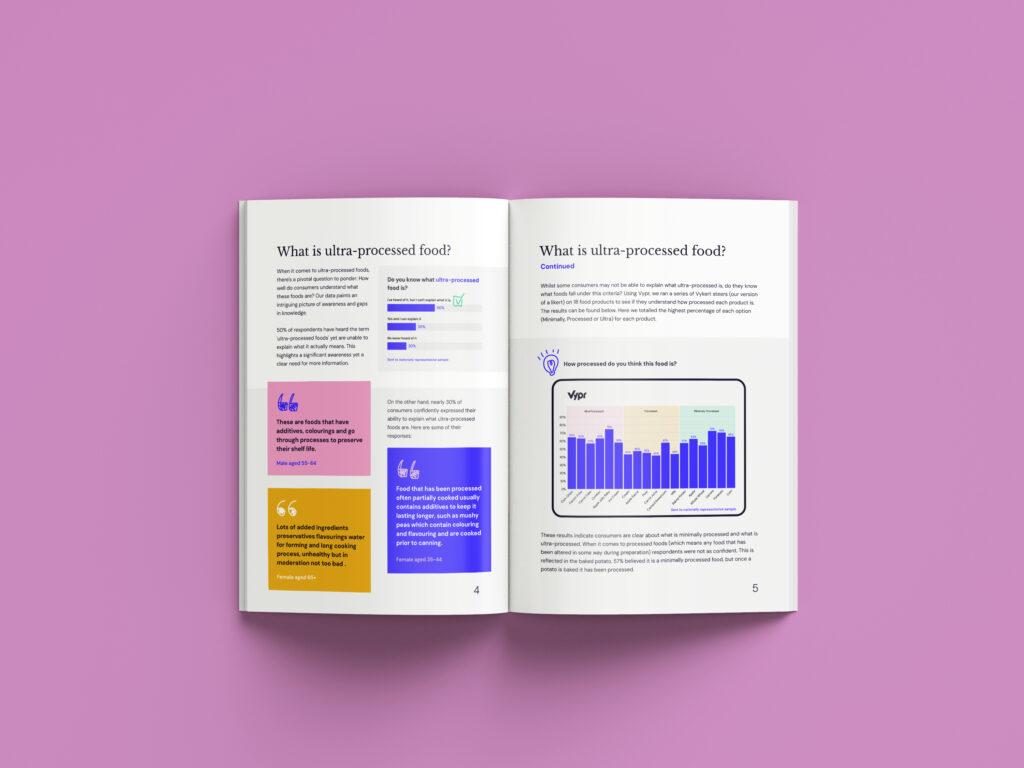Qualitative vs quantitative consumer data in product intelligence

Product intelligence relies upon accurate customer data analysis to improve product development cycles and increase consumer satisfaction. The type of data used can influence the success of this process.
In this article, we discuss how qualitative vs quantitative consumer data can impact product intelligence solutions. We also explore the benefits of combining them for effective data-driven decision-making.
Continue reading to explore how a qualitative vs quantitative analysis of consumer data can impact product intelligence and development processes.

Benefits of using mixed methods for consumer research
It is important to use more than one research methodology when gathering customer data insights. A mixed methods approach involves using qualitative and quantitative research methods in conjunction with one another. This enables researchers to overcome the limitations of each method and benefit from their unique strengths.
What is qualitative research?
Qualitative consumer data is non-numerical and revolves around the investigation of consumers’ thoughts and feelings with open-ended questions. Within the product intelligence sphere, qualitative research aims to provide an understanding of customers’ behaviour, perceptions, needs and opinions.
Researchers use qualitative data analysis to gain insights that provide them with a better, more personalised understanding of their target customers. Having access to qualitative insights allows businesses to develop products that will satisfy customers and enhance their lives.
Examples of qualitative data collection
Qualitative researchers collect data by engaging with personal accounts from consumers. Depending on the environment, this is achieved via in-depth interviews, discussions during focus groups, open-ended questionnaires and more. Consumer video responses from VyPops are a good example of this.
What is quantitative research?
A quantitative study is based on the collection of numerical data from a representative group of users. The resulting data set (or sets) include definitive answers that users have selected from a select number of available options.
When researchers analyse quantitative data, they identify patterns and use inferential and descriptive statistics to create fact-based statements. An example of this could be the dominant text style preferences of a specific age group. This is useful for product intelligence, as a company can generalise these results and apply them in a broader context to improve their product development processes.
Examples of quantitative data collection
Quantifiable customer data collection revolves around the gathering of close-ended answers to research questions. Popular methods include surveys and questionnaires with interval, multiple-choice, and yes or no questions, as well as the examination of fixed online analytics. Vypr’s Brand Tracker metrics are a key example of this.
How do quantitative and qualitative research methods work together?
Combining qualitative and quantitative research involves taking advantage of each method’s strengths to help counteract its weaknesses.
For example, a detailed qualitative study can provide an in-depth context for user behaviour to help explain the statistics and trends highlighted by quantitative data. This conjoint analysis creates a deeper understanding of consumers, enabling you to build better products.
Here is an overview of some of the main strengths and weaknesses of qualitative and quantitative research methods.
Strengths of qualitative research
When it comes to understanding subjective consumer mentalities, qualitative data offers unparalleled insights. Some major qualitative data advantages include the following:
- Research flexibility. The open-ended nature of qualitative research methods is ideal for discovering patterns across sample groups which may otherwise have gone unnoticed. As trends emerge, researchers have the flexibility to adjust their approach for further exploration.
- Informativeness. When researchers analyse qualitative data, they gain detailed insights into consumers’ needs, behaviours and experiences. This helps product teams adjust their development process to create an end result that better suits consumers.
Limitations of qualitative research
While qualitative research is undeniably useful for product intelligence, it does have certain limitations. Below are some of the main disadvantages of qualitative consumer research.
- Limited representativeness. Qualitative studies often gather data from a smaller sample group. This makes it more challenging to generalise results when interpreting non-numerical data and can prevent findings from being applied in broader contexts.
- Researcher bias. Qualitative data collection methods give researchers great influence over the recording and interpretation of participant information. The subjectivity of this process leaves room for both intentional and unintentional bias, which can skew results.
Strengths of quantitative research
Quantitative research is an extremely useful source of factual evidence within the sphere of product intelligence. Some key advantages of quantitative research methods include the following:
- Generalisation of results. Quantitative research involves collecting data from larger, more representative participant groups. This representation makes it easier for researchers to generalise quantitative data and apply it in larger settings.
- Improved objectivity. The use of statistical analysis is key in reducing potential biases within quantitative research findings. This objective standardisation can help researchers determine fast, conclusive results to set questions for easy identification of trends.
Limitations of quantitative research
Quantitative research is an effective way of gathering definitive consumer answers to set questions. However, it has certain disadvantages. Below are some of the main limitations you may encounter.
- Surface-level information. Quantitative research relies upon descriptive and inferential statistics, which are ideal to provide factual data. However, this surface-level focus does not provide insight into consumer motivations, making it difficult to understand the reasons behind quantitative findings.
- Lack of research flexibility. Researchers often have to pre-determine the questions asked during a quantitative study. This increases the rigidity of the research process and prevents the inclusion of additional questions to further explore any patterns that emerge.
Get reliable data for better product decisions with Vypr
Vypr is the world’s leading product intelligence platform. It enables you to understand changing consumer behaviour through fast, cost-effective consumer insight.
By combining different research methods, you can gain more robust and comprehensive qualitative and quantitative data. This enables you to make better product decisions faster.
Move away from the limitations of purely qualitative vs quantitative research. Try Vypr for free and experience the benefits of a mixed-methods research approach.







